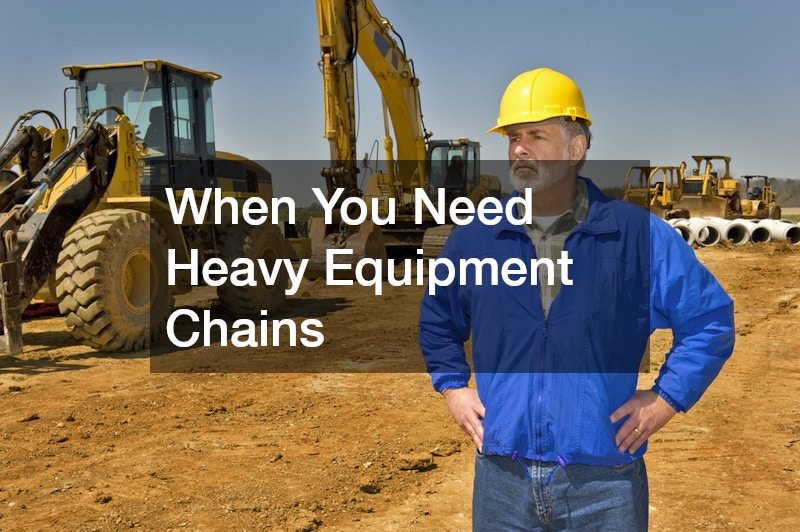Heavy equipment chains are crucial components in various industries such as construction, agriculture, forestry, and mining. These chains provide essential support for lifting, towing, and securing heavy loads, ensuring operational efficiency and safety. Knowing when to use heavy equipment chains is vital for optimizing performance and preventing accidents. Here are several scenarios when heavy equipment chains are indispensable:
Handling Heavy Loads
One of the primary uses of heavy equipment chains is handling exceptionally heavy loads.
In industries like construction and mining, where massive machinery and materials need to be moved, chains provide the necessary strength and durability. Whether lifting large steel beams, transporting heavy machinery, or securing loads on flatbed trucks, heavy equipment chains are designed to withstand substantial weight and tension, ensuring safe and efficient operations.
Towing and Recovery Operations
In towing and recovery operations, heavy equipment chains are essential for their strength and reliability. These chains are used to tow large vehicles, machinery, and equipment that may have broken down or become stuck. For instance, in the forestry industry, chains are used to tow large logs or recover equipment from challenging terrains. The robust nature of heavy equipment chains ensures that they can handle the extreme forces involved in towing and recovery tasks without breaking or deforming.
Securing Loads for Transportation
Transporting heavy equipment and materials requires secure fastening to prevent shifting or falling during transit. Heavy equipment chains are ideal for this purpose due to their high tensile strength and durability. When transporting heavy machinery, construction materials, or agricultural equipment, these chains can be used to tie down the loads securely. Properly secured loads minimize the risk of accidents and damage during transportation, ensuring that the equipment and materials reach their destination safely.
Operating in Harsh Conditions
Heavy equipment chains are also essential when operating in harsh and challenging conditions. Environments such as construction sites, mines, and forests often present rough terrain, extreme weather, and abrasive materials. Heavy equipment chains are designed to withstand these conditions, providing reliable performance without significant wear and tear. For example, chains used in snow removal equipment or logging machinery must endure cold temperatures and rugged landscapes, making heavy-duty chains the best choice for such applications.
Lifting and Rigging Applications
In lifting and rigging applications, heavy equipment chains are indispensable for their strength and versatility. These chains are used in conjunction with cranes, hoists, and other lifting devices to move heavy objects. The chains’ ability to bear substantial loads and their resistance to stretching and breaking make them ideal for lifting tasks. Industries such as shipping, manufacturing, and construction rely on heavy equipment chains to lift and position heavy items safely and accurately.
Enhancing Traction and Stability
In some applications, heavy equipment chains are used to enhance traction and stability. For instance, tire chains for heavy vehicles such as tractors, trucks, and construction equipment improve traction on slippery or uneven surfaces. This is particularly important in snowy, muddy, or icy conditions where maintaining control and stability is crucial. By providing additional grip, heavy equipment chains help prevent accidents and improve the efficiency of operations in challenging terrains.
